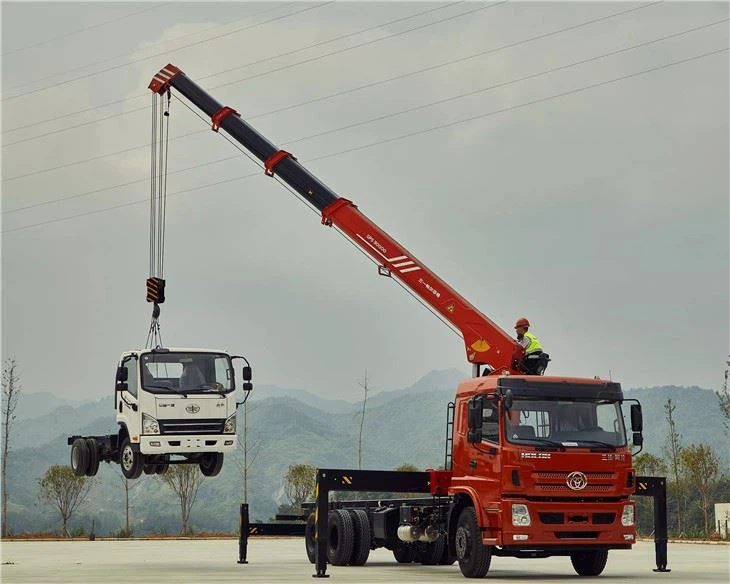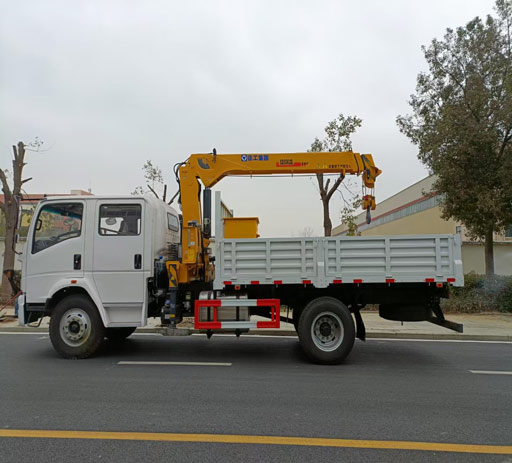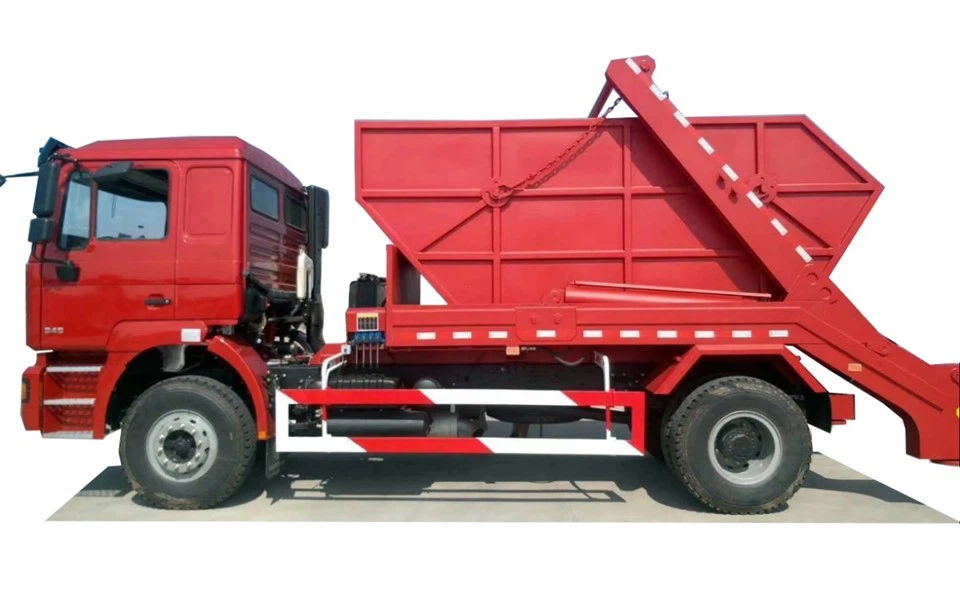Unlocking the Future: The New Garbage Truck Revolution

The waste management industry is evolving rapidly, and at the forefront of this transformation is the introduction of new garbage trucks. These vehicles are not just essential for collecting waste but are becoming smart machines equipped with advanced technologies that enhance their functionality and efficiency. This article will explore the various aspects of new garbage trucks, their innovative features, and their significant impact on urban sustainability. We will also provide practical examples, tips, and answer frequently asked questions to give readers a well-rounded understanding of this exciting topic.
The Importance of Garbage Trucks in Waste Management
Garbage trucks play a crucial role in any community by ensuring waste is collected and disposed of efficiently. The evolution of garbage trucks is driven by several factors:
1. Increasing Urbanization
As cities grow, the volume of waste generated increases significantly. New garbage trucks are designed to handle larger loads and operate more efficiently in urban settings.
2. Environmental Concerns
With climate change and pollution being pressing global issues, the waste management industry is pivoting towards greener solutions. New garbage trucks are equipped with technologies that reduce emissions and promote recycling.
3. Cost Efficiency
Modern garbage trucks are built for durability and efficiency, helping municipalities save on fuel and maintenance costs. Their innovative features lead to lower operational costs over time.
Types of New Garbage Trucks
The variety of garbage trucks available today caters to diverse waste management needs. Here’s a look at some common types:
1. Front Loader Trucks
Front loader trucks are equipped with hydraulic arms that lift large dumpsters for efficient collection. These trucks are ideal for commercial waste services.
2. Rear Loader Trucks
Rear loader trucks are designed for neighborhoods, where specially trained personnel collect waste from the curb. They are versatile and can handle various waste types.
3. Side Loader Trucks
Side loader trucks allow for automated waste collection, reducing the need for manual labor. This makes them safer and more efficient in residential areas.
4. Compactor Trucks
Compactor trucks compress waste, maximizing space and reducing the number of trips to disposal sites. These are commonly used for both residential and commercial waste management.
Innovative Features of New Garbage Trucks
New garbage trucks are equipped with a host of modern features to improve efficiency and sustainability:
1. Smart Technology Integration
Many new garbage trucks come with GPS technology that optimizes collection routes, reducing fuel consumption and time on the road.

2. Eco-Friendly Designs
Modern trucks often feature hybrid or fully electric power options, which greatly reduce greenhouse gas emissions. Many municipalities are prioritizing these eco-friendly options to meet sustainability goals.

3. Automated Collection Mechanisms
Automated side loaders now utilize robotic arms to pick up bins and empty them into the truck, minimizing the need for outside personnel and enhancing safety and efficiency.
4. Advanced Safety Features
New garbage trucks are equipped with improved visibility systems, backup cameras, and collision avoidance technology that enhances the safety of both operators and pedestrians.
Efficiency in Waste Collection with New Garbage Trucks
Efficiency in waste collection is paramount for municipalities. Here are some practices that can enhance waste collection using new garbage trucks:
1. Route Optimization
Using smart technology, municipalities can analyze traffic patterns and waste generation data to create optimized routes that save time and reduce fuel costs.
2. Regular Maintenance
To maximize the efficiency and lifespan of garbage trucks, regular maintenance schedules should be adhered to. This practice prevents breakdowns and improves overall vehicle performance.
3. Employee Training
Training operators on the latest features and best practices not only improves safety but also ensures that the trucks are used to their maximum potential.
Practical Tips for Implementing New Garbage Trucks in Your Municipality
For municipalities considering the adoption of new garbage trucks, here are some practical tips:
1. Conduct a Needs Assessment
Evaluate waste generation rates, types of waste collected, and current operational challenges to determine the specific needs of your community.
2. Research Options Thoroughly
Explore various manufacturers and models to find trucks that fit your community’s requirements, budget, and sustainability goals. Request demos whenever possible.
3. Involve the Community
Engage with residents to educate them on how they can assist in waste reduction and management. A well-informed community can positively influence waste management practices.
4. Evaluate Financial Implications
While initial acquisition costs might be high, consider the long-term savings associated with operational efficiencies, reduced maintenance costs, and fuel savings.
The Future of Garbage Trucks: Trends to Watch
As technology continues to evolve, so do garbage trucks. Here are some trends shaping the future of waste collection:
1. Automation and AI
With the rise of autonomous vehicles, garbage trucks may soon require minimal human intervention, leading to safer and more efficient waste collection processes.

2. Increased Electric Vehicle Adoption
As the demand for eco-friendly solutions grows, we anticipate a significant increase in the use of electric garbage trucks that offer quieter and cleaner operations.
3. Integration of IoT Devices
Internet of Things (IoT) applications in garbage trucks can provide real-time data insights, enabling better management and maintenance schedules based on usage.
Challenges Facing New Garbage Trucks
Despite their benefits, the implementation of new garbage trucks comes with its own set of challenges:
1. High Initial Costs
Although new technologies can save money in the long run, the initial costs may deter some municipalities from making the switch.
2. Infrastructure Requirements
Upgrading existing infrastructure to accommodate new garbage truck technologies, such as electric charging stations, may pose logistical issues.
3. Staff Training Needs
Training existing waste management staff on new equipment and technologies will be essential but requires time and resources.
FAQ Section
1. What makes new garbage trucks different from older models?
New garbage trucks often come equipped with smart technologies, enhanced safety features, improved fuel efficiency, and eco-friendly designs, setting them apart from older models.
2. How do automated garbage trucks work?
Automated garbage trucks utilize robotic arms and advanced sensors to autonomously collect waste from designated bins without the need for manual lifting by operators.
3. Are electric garbage trucks worth the investment?
Electric garbage trucks can lead to significant savings in fuel and maintenance costs, alongside reduced emissions, making them a worthwhile investment for many municipalities in the long run.
4. What are the environmental benefits of new garbage trucks?
New garbage trucks are designed to generate fewer emissions, reduce noise pollution, and improve recycling rates, contributing positively to urban sustainability efforts.
5. How can municipalities prepare for the transition to new garbage trucks?
Municipalities should conduct thorough needs assessments, involve the community in discussions, research different models, and plan for staff training and infrastructure upgrades.
6. What role does technology play in modern waste management?
Technology enhances waste management by optimizing routes, automating collection, and providing real-time data, leading to increased efficiency and sustainability in waste management practices.
